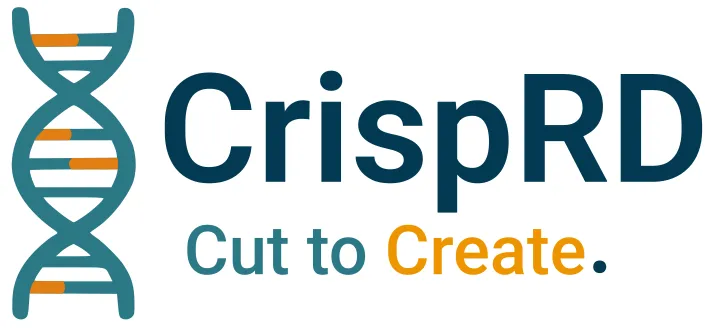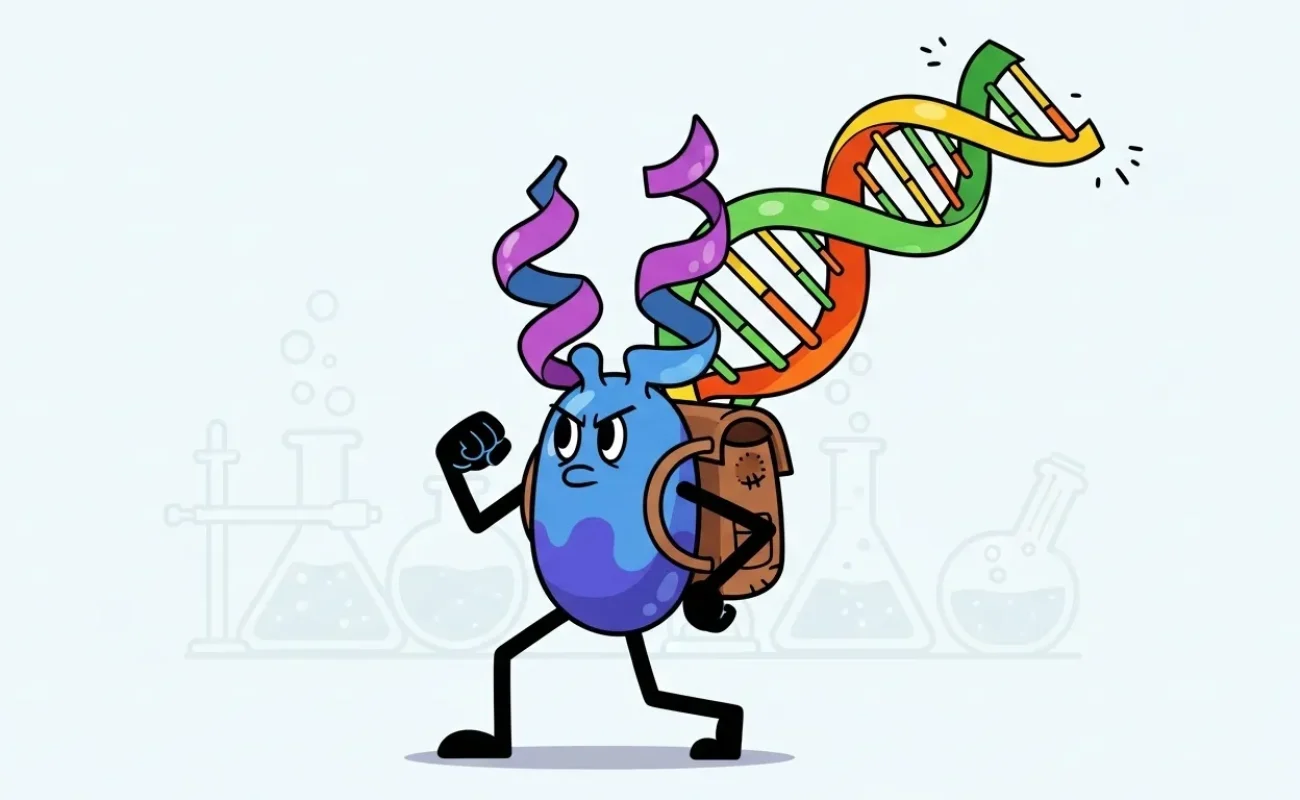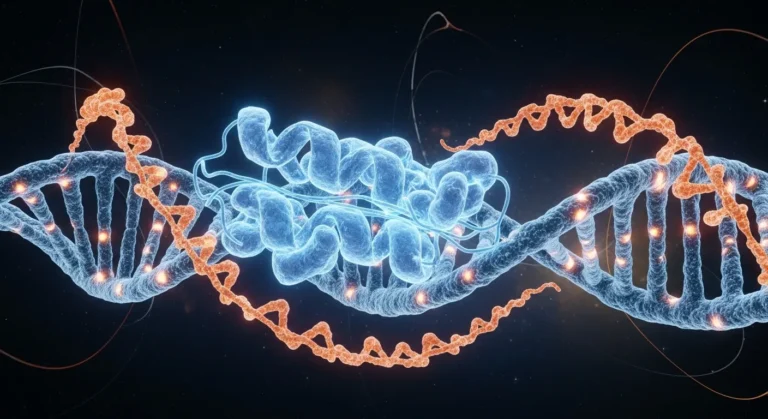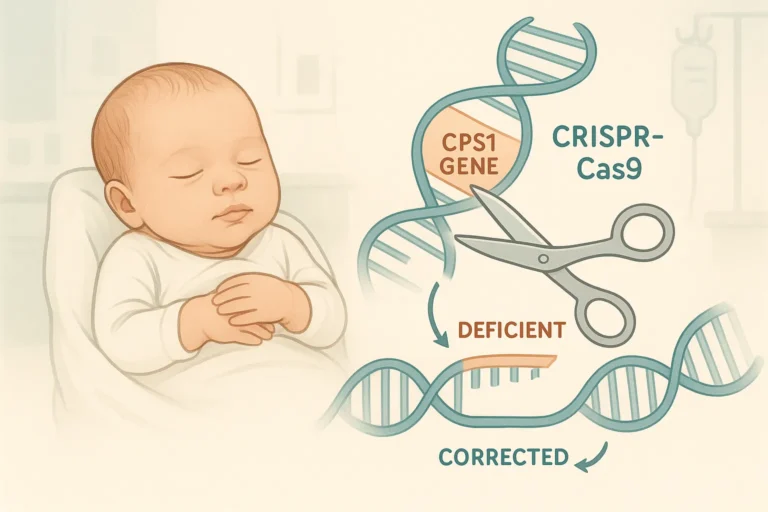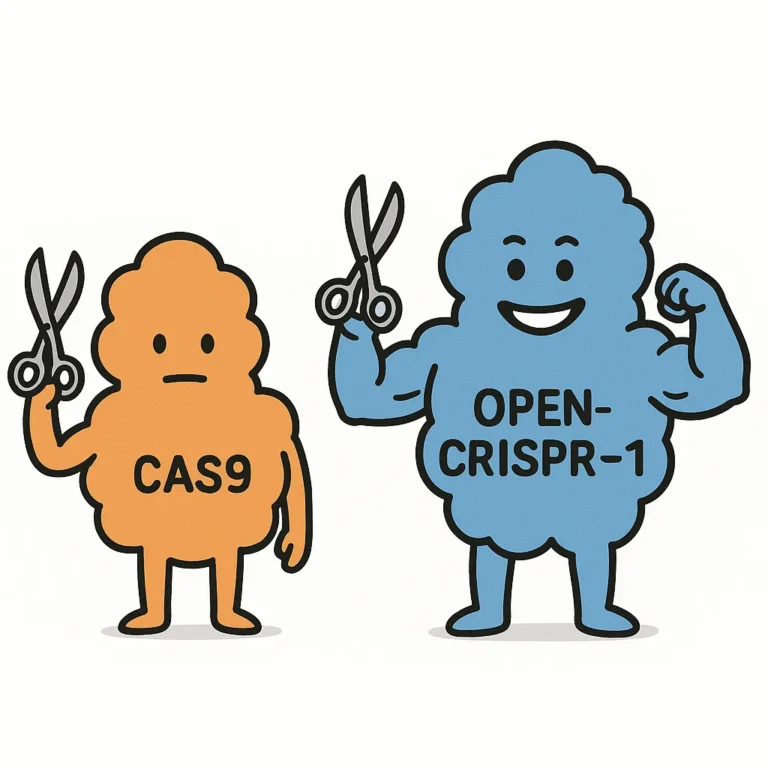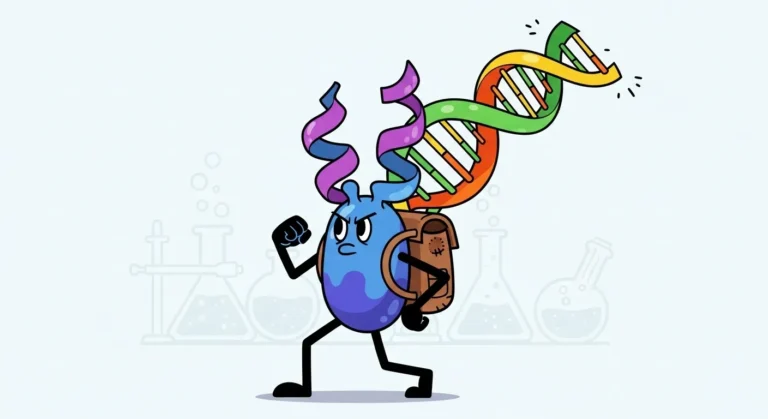Researchers at the Broad Institute and Columbia University have developed evoCAST, a new genome editing technology that marks an important milestone in the field. Published in the prestigious journal Science, this approach enables precise and efficient insertion of very large DNA fragments — exceeding 10 kilobases — into human cells.
Based on a CRISPR-associated transposase (CRISPR-associated transposase, CAST) system, evoCAST has been optimized in the laboratory using the innovative phage-assisted continuous evolution (PACE) method. This combination opens the door to unprecedented therapeutic applications, particularly for complex genetic diseases requiring the addition of entire genes.
What is the CRISPR-CAST System?
CRISPR systems, originally discovered as adaptive immune mechanisms of bacteria and archaea, use an RNA-guided protein complex to recognize and cut target DNA (e.g., CRISPR-Cas9). The CRISPR-CAST system is a natural innovation where a type I-F or type V-K CRISPR system has fused with a transposition system.
Unlike classical CRISPR-Cas, which generates double-strand breaks (DSBs) often leading to undesirable insertions or deletions, the CAST system enables direct integration of large DNA segments at a targeted genomic site without breaking the DNA. This fusion exploits the RNA guidance specificity of CRISPR to position transposase machinery that precisely inserts the desired DNA, like genetic “copy-paste.”
The CAST system comprises several essential proteins: the CRISPR complex called Cascade (assembly of Cas6, Cas7, Cas8 proteins associated with a crRNA guide RNA), which recognizes and binds to the target DNA sequence, and a multi-subunit transposase (notably TnsA, TnsB, and TnsC) that catalyzes excision and integration of the DNA transposon. TniQ’s role is to assist coordination between Cascade and transposase activity.
Limitations of the Natural System and Directed Evolution
While certain natural CAST systems support targeted DNA insertion in bacteria with near-perfect efficiency, their activity in human cells is initially very low (<0.1%). This is because these transposases evolved to function in bacterial environments, with moderate activity to limit negative impacts on the host.
To overcome this difficulty, researchers implemented a phage-assisted continuous evolution (PACE) method that continuously mutates and selects variants of the TnsB transposase (and other subunits) in E. coli to improve their efficiency. This process yielded an evolved transposase (designated P4-15) with an activity gain exceeding 200-fold, more efficient in human cells.
Performance and Characteristics of evoCAST
The combination of evolved transposases with modified and optimized CRISPR components gives rise to evoCAST, which achieves targeted integration rates of 10 to 30% in human cells across a variety of relevant genomic loci, from “safe loci” to genes involved in genetic diseases. EvoCAST supports integration of very large DNA fragments (>15 kb) and presents several major advantages:
- No double-strand DNA breaks, thus avoiding side effects such as undesirable mutations, deletions, or translocations.
- High product purity: primarily single, base-pair-precise insertions with very few or no detected indels.
- Easy programmability via guide RNAs, enabling rapid adaptation to different genetic targets.
- Broad applicability: effective in multiple human cell types, including primary fibroblasts that are difficult to transfect.
- Marked reduction in dependence on cytotoxic bacterial proteins (ClpX) previously required to enhance transposition.
Therapeutic Applications and Research
EvoCAST opens the door to mutation-agnostic therapies for loss-of-function genetic diseases by offering the possibility of inserting a healthy copy of a gene directly into its natural locus or into a so-called safe locus, thus preserving normal regulation of that gene. Among demonstrated applications are integration of the factor IX gene in hepatic cells for hemophilia B, or insertion of therapeutic genes in modified immune cells for immunotherapy.
Conclusion
The CRISPR-CAST system, optimized in evoCAST, combines the exceptional specificity of RNA-CRISPR guidance with the ability to integrate large sequences without damaging the genome. This approach represents a fundamental advance in the field of genetic editing, with vast therapeutic potential and an improved safety profile compared to technologies based on DNA double-strand breaks.
📖Recommended Reading in Science :
Programmable gene insertion in human cells with a laboratory-evolved CRISPR-associated transposase, by Witte et al., 2025 — DOI: 10.1126/science.adt5199
